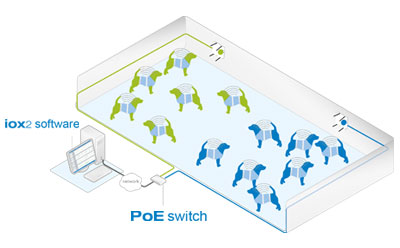At JRF, we can perform validated and GLP compliant dog telemetry
studies using a jacketed technology. We also undertake safety pharmacology as a discovery support for lead identification as well as for regulatory submission.
1. Cardiovascular

 Cardiovascular-related complications were responsible for 34% of drug withdrawals during the period 1990 to 20091. Many drugs have been withdrawn from the market due to the occurrence of life-threatening polymorphic ventricular tachycardia commonly referred as Torsade de Pointes (TdP)2. Nearly one fifth of cases of TdP lead to sudden death from ventricular fibrillation. This realization has resulted in increased regulatory focus on safety pharmacology and cardiovascular pharmacology in particular. The ICH S7A3 and S7B4 guidelines are a basis for these regulatory safety pharmacology studies. ICH S7A recommends a particular focus on critical physiological systems like Cardiovascular, Respiratory & Central Nervous Systems. QT prolongation is an important biomarker for prediction of TdP and evaluation of possible drug effect is a key component of CVS safety pharmacology. “Conscious Dog Telemetry” (with well-defined end points as per ICH S7B) has become a gold standard. At JRF, we can perform validated and GLP compliant dog telemetry studies using a jacketed technology. End points from such studies include:
Cardiovascular-related complications were responsible for 34% of drug withdrawals during the period 1990 to 20091. Many drugs have been withdrawn from the market due to the occurrence of life-threatening polymorphic ventricular tachycardia commonly referred as Torsade de Pointes (TdP)2. Nearly one fifth of cases of TdP lead to sudden death from ventricular fibrillation. This realization has resulted in increased regulatory focus on safety pharmacology and cardiovascular pharmacology in particular. The ICH S7A3 and S7B4 guidelines are a basis for these regulatory safety pharmacology studies. ICH S7A recommends a particular focus on critical physiological systems like Cardiovascular, Respiratory & Central Nervous Systems. QT prolongation is an important biomarker for prediction of TdP and evaluation of possible drug effect is a key component of CVS safety pharmacology. “Conscious Dog Telemetry” (with well-defined end points as per ICH S7B) has become a gold standard. At JRF, we can perform validated and GLP compliant dog telemetry studies using a jacketed technology. End points from such studies include:
-
Blood Pressure
-
Heart Rate
-
ECG (QT interval and QTc, RR interval, PR interval & QRS duration)
-
Respiratory Parameters (Frequency, Tidal volume & Minute volume)
Unlike telemeterised systems using surgically implanted sensors and transmitters, JRF’s jacketed technology enables the inclusion of sophisticated cardiovascular end-points during sub-acute and chronic studies, reducing the need for separate studies. This reduces animal usage (and cost) as well as providing valuable data related to possible accumulation of the NCE or its metabolite(s) after repeat dosing through on-or-off target effects1.
We can further integrate general toxicity studies with telemetry, by (for example) using a combination of canine-respiratory plus cardiovascular and toxicokinetics. This saves cost, time and animal usage without compromising scientific validity.
We also undertake safety pharmacology as a discovery support for lead identification as well as for regulatory submission.
2. CNS
3. Motor activity
o Behavioral changes
o Coordination
o Sensory/motor reflex responses
o Body temperature (e.g. FOB, Modified Irwin’s test, Neurotoxicity testing)
4. Respiratory
5. Gastrointestinal
6. Intestinal transit time
7. Gastric secretion
References :
1. Cavero, I Expert Opinion on Drug Safety (2009), 8 (6), 627-647, Cavero I (2009). Exploratory Safety Pharmacology: a new safety paradigm to de-risk drug candidates prior to selection for regulatory science investigations, Expert Opinion on Drug Safety, 8:6, 627-647 Cavero, I Expert Opinion on Drug Safety (2009), (6), 627-647
2. Cahoon, WD, Jr. Progress in Cardiovascular Nursing (2009), 24(1), 30-33, Cahoon WD (2009). Acquired QT Prolongation. Jr. Progress in Cardiovascular Nursing (2009), 24(1), 30-33
3. http://www.ich.org/fileadmin/Public_Web_Site/ICH_Products/Guidelines/Safety/S7A/Step4/S7A_Guideline.pdf
4. http://www.ich.org/fileadmin/Public_Web_Site/ICH_Products/Guidelines/Safety/S7B/Step4/S7B_Guideline.pdf
Services available at following locations: